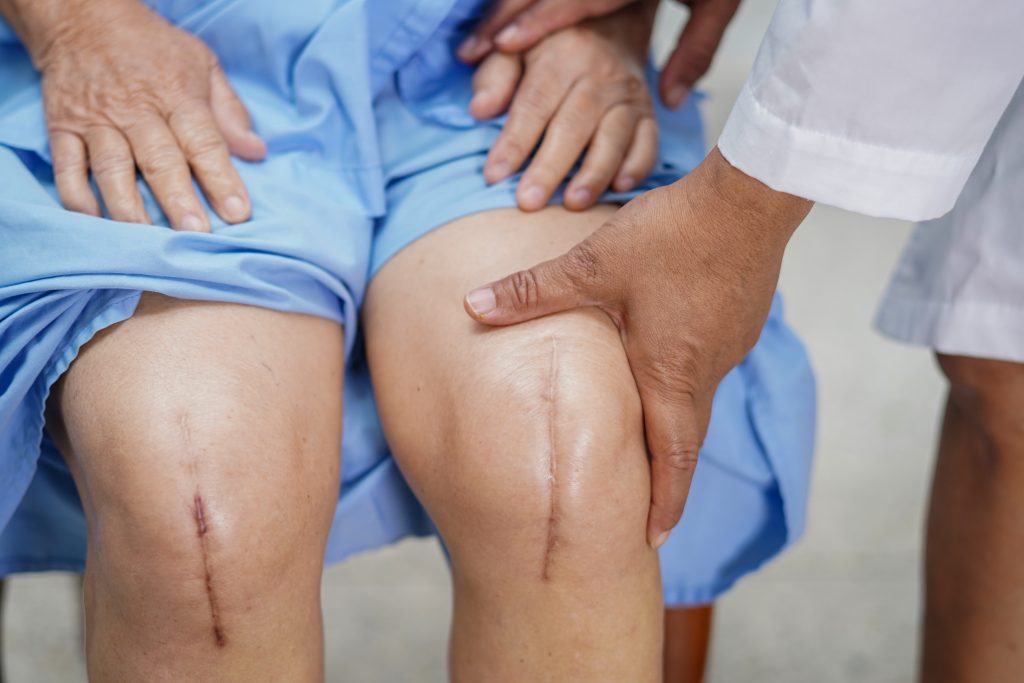Knee Replacements vs ACL Reconstruction Recovery
Joint pain and dysfunction are common problems that affect many adults. Damage may be due to accidents, sports injuries, or natural aging processes. The patient may experience joint pain, stiffness, swelling, and instability. Procedures such as total knee replacement and ACL reconstruction are available to restore normal weight-bearing and movement to the knee. There are significant differences between these two surgical procedures and why they are performed.
When Is An ACL Reconstruction Procedure Needed?
An ACL reconstruction is normally done when the anterior cruciate ligament is so torn or damaged and can’t be successfully repaired. The reconstruction procedure removes the ligament and replaces it with tissue from another part of the body or from donor tissue that is reserved for grafting purposes. ACL injuries most commonly occur when a person stops or changes direction abruptly, which is a common occurrence in soccer, basketball, and even downhill skiing. Typically, athletes report that they recognized as soon as it happened that something was wrong with their ACL and they anticipated reconstruction would be needed.
When Is A Total Knee Replacement Needed?
While ACL reconstruction involves damage to ligaments in the knee, total knee replacement involves damage to the bones that make up the joint. This problem usually occurs from arthritis, in which cartilage that cushions the bones of the knee during movement becomes worn away. The most common arthritis for this procedure is osteoarthritis and other knee diseases such as rheumatoid arthritis and psoriatic arthritis. Typically, patients with severe pain or severely limited range of motion are considered for this procedure. Knee replacement replaces the damaged joint with a new one made of artificial materials. Typically, due to the invasive nature of a total knee replacement, it is typically recommended that patients use physiotherapy and steroid injections first before considering surgery.
Differences in Surgical Technique

An ACL reconstruction is performed as a minimally-invasion procedure. This means that only small incisions are made in the knee. Instruments are inserted into the incision to remove the damaged ligament and replace it with tissue from the patient’s body or donor tissue. With ACL tears, simply sewing up the ligament doesn’t usually lend to a full recovery or use of the ligament, which means that grafting is required. Grafting enables your body to recover with full motion instead of stinted growth when sewing the tendon. The procedure typically takes between two and three hours long. Once the procedure is complete, patients tend to go home on the same day. In most cases, there is between an 80-90% success rate for ACL surgeries.
In a total knee replacement, a large incision must be made in the knee joint. Damaged areas of bone are removed and replaced with durable materials that create an artificial knee joint. Implants are typically made of metal alloys, ceramic material, or strong plastic parts. This is typically addressed prior to the surgery and each type of material has pros and cons. However, patients typically don’t have much say in this option as it is usually based on the surgeon’s preferred material and training. The entire procedure typically takes between one to three hours. Once the procedure is complete, patients tend to stay in the hospital for two to three days. During this time, you’ll recover from the anesthesia and surgery. In most cases, there is around an 82% success rate for knee replacement surgeries.
Differences in Recovery Time
Generally, an ACL reconstruction procedure requires an extended period of six months of rehabilitation. A patient who has had ACL reconstruction may not return to normal, rigorous activity for up to a year and it typically takes 12 weeks before being able to be weight bearing on the knee. Additionally, the physical therapy that follows after an ACL reconstruction is typically very strict to ensure that you get as much use out of your knew tendon as possible. Not to mention the nutrition needed to help your body recover.
A knee replacement requires physical therapy for 4 to 8 weeks. A patient who has had a knee replacement can return to normal activities after 12 weeks. However, some strenuous activities that put too much stress on the replaced joint should be avoided. Additionally, it typically takes 6-8 months before patients reach full recovery maximal strength and endurance.
Your orthopedic physician will determine the right surgical procedure for your individual case. Both surgeries have been performed millions of times, with good rates of success for the patient. The most critical point is to follow your doctor’s instructions and your physical therapist’s workout plan precisely to enjoy the best outcomes for your surgery.
